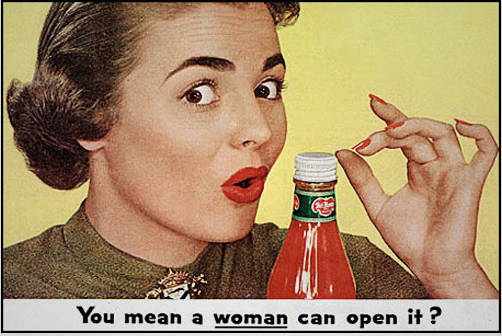THE CROFT // Sex sells - we've all heard it, but does this old saying actually ring true? Alice Williams explores controversial imagery in advertising that links seduction with food in shameless attempts to spark consumer interest, concluding that it's a trend best left in the past.
As a young woman myself, this is a subject that I have had a connection with throughout my life. I can remember as a child, watching Britain’s Got Talent with my family before a Muller advert pops up on the screen with Nicole Scherzinger seductively licking yoghurt off her spoon; such a seemingly-harmless video clip created unrealistic expectations of what a woman should look like whilst eating, and forced me to believe that this is how I should act myself (which is definitely not the case and is frankly just weird, because no one eats like that, right?)
The image of seeing a woman place an object in her mouth is a sexual innuendo constantly used in fast-food commercials - most apparent in America, though common-place the world-over. It automatically turns the advert into one of a hyper-sexual nature, and perpetuates the male fantasy by showing women in a demeaning and submissive position. Women are objectified in these adverts, turned into consumable objects for men to absorb. This causes undeniably damaging repercussions for young girls trying to navigate through puberty and dealing with their body image.
Men are targeted as the primary consumers through the use of sex and the female body, because we all know that ‘sex sells.’ But is this still the case?
It has been thought for centuries that sexual images can be used to sell products. This dates back to 1871 when the company ‘Pearl Tobacco’ used nudity as a marketing technique [pictured below]. The seductive image created such a buzz that other companies were inspired by this sales tactic.
For example, the American fast-food chain ‘Carl’s Jr’ famously had a long-running advertising campaign featuring models and actresses like Kim Kardashian and Paris Hilton, who were pictured seductively eating burgers. This approach gained lots of publicity for the chain. However, the un-relatedness of the advert was later called into question.
In 2017, a meta-analysis was carried out by researchers at the University of Illinois where they examined 78 peer-reviewed advertising studies. Lead author, John Wirtz, stated: “We found literally zero effect on participants’ intention to buy products in ads with a sexual appeal”, suggesting that sex does not actually sell.
So, has sex in advertising changed with time? Brands do appear to be taking note, including Carl’s Jr axing the seductive burger advert after the backlash it was receiving. This highlights how brands are becoming aware of the negative effects of their sexualised adverts, and are taking responsibility for it.

I am not going to ignore the fact that men are also sexualised in food adverts, particularly when just last year, the soup brand Re:Nourish displayed a black and white photo of a naked man with a large bottle of the soup being super-imposed over his genitals. The ASA stopped this advert from appearing again as it was placed in a busy city centre location, with the possibility of children seeing it. The image was suggestive and showed only the model’s body, objectifying him by using his physical features to draw attention to an unrelated product. The fact that this advert was released only last year shows that the sexualisation of food is still apparent in today’s society and is harmful to men, women, and children.
So, brands, listen up, naked bodies have no place in food adverts; it doesn’t make me want to eat the food more - in fact, it does the opposite. I would much prefer my dinner without a side of genitals, please.
Feature Image: "Alcoa Aluminium - Beyond Belief: Shocking vintage adverts from the 'Golden Age'". Telegraph. 24 December 2015. Retrieved 2017-01-09.
Study: John G. Wirtz, Johnny V. Sparks & Thais M. Zimbres (2018) The effect of exposure to sexual appeals in advertisements on memory, attitude, and purchase intention: a meta-analytic review, International Journal of Advertising, 37:2, 168-198, DOI: 10.1080/02650487.2017.1334996









